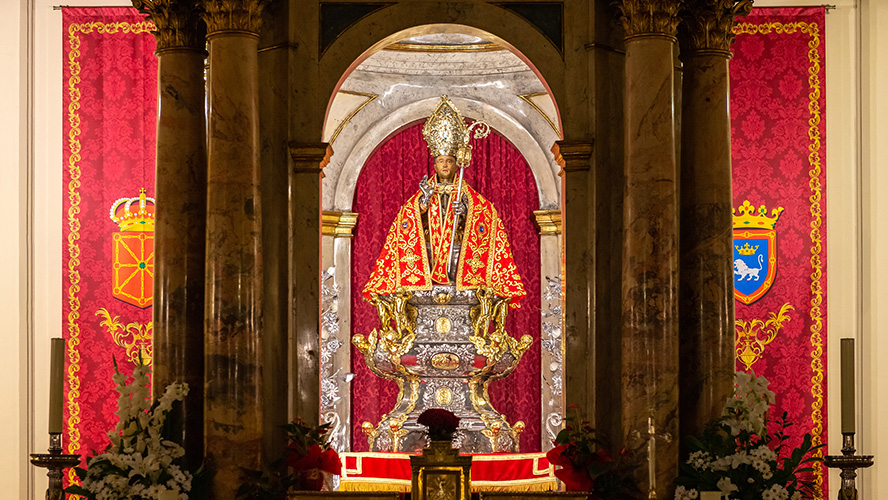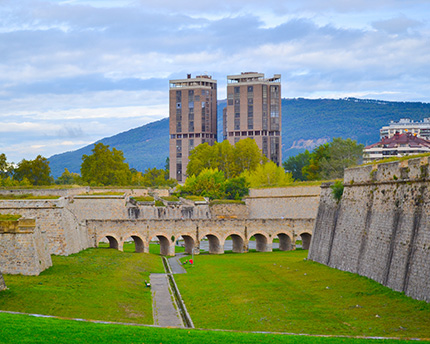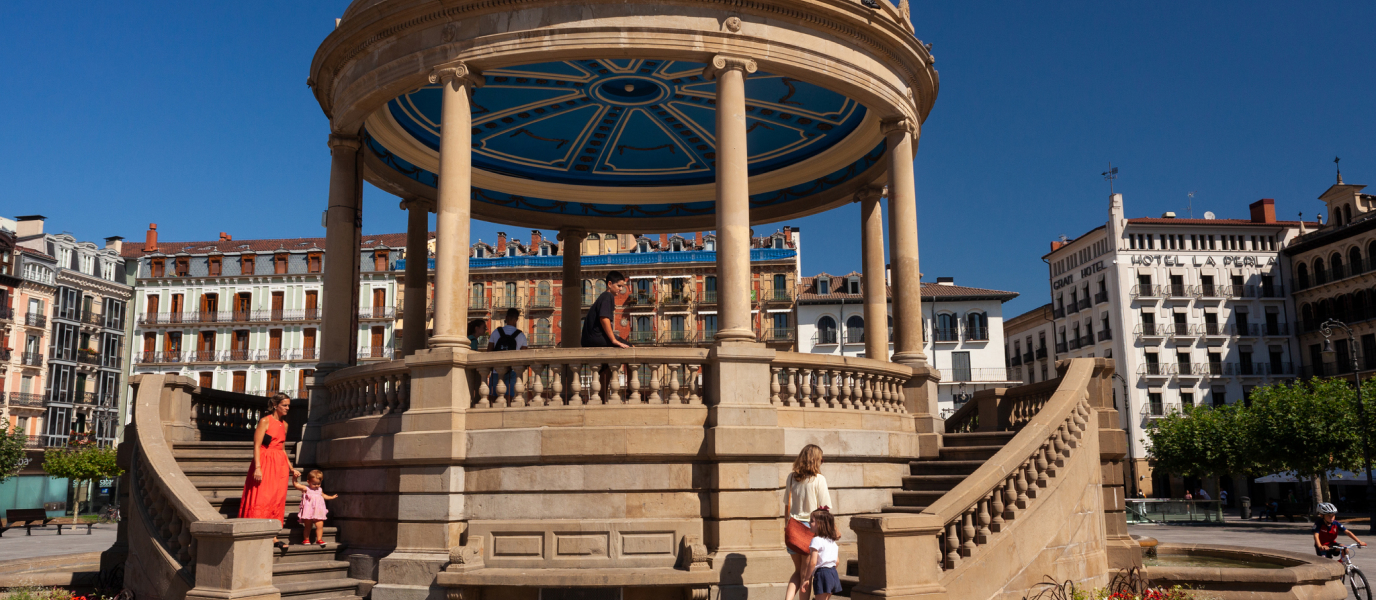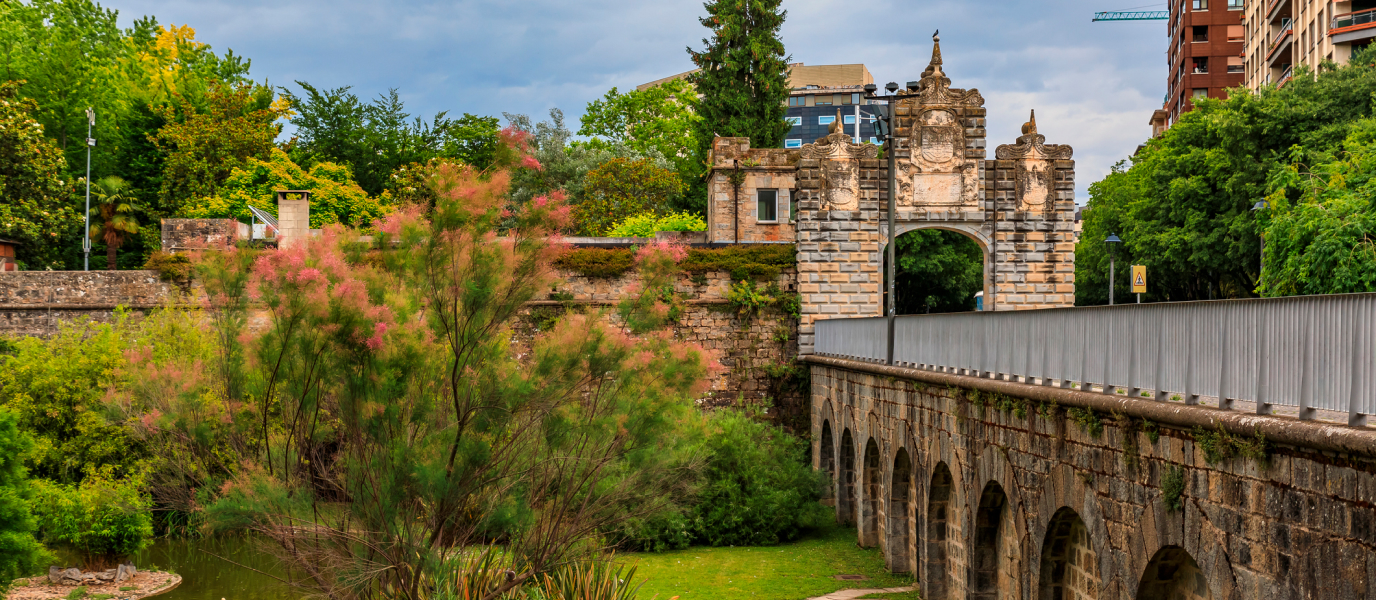Located in Pamplona’s historic quarter, the church of San Lorenzo is especially revered by the people of Navarre as (in addition to the high altar dedicated to San Lorenzo) it holds the Chapel of San Fermín — without a doubt one of the most popular saints in the whole of Spain, who has given his name to one of the Peninsula’s most international festivals: the Sanfermines.
The present parish church of San Lorenzo occupies the site of an earlier, thirteenth-century church, of which very little remains, although it is known that back then there was already a chapel dedicated to San Fermín. The patron saint’s current chapel dates from the eighteenth century, while the church’s new façade dates from 1901.
The Festival of the Relics of San Fermín is celebrated every 16th of January in the chapel of Pamplona’s patron saint. Fifty new members of the Court of San Fermín are welcomed and presented with a medal. The Parish Choir sings and the holy relics are venerated. And every year on the 7th of July, the day of San Fermín, the figure of the saint is borne in procession around the streets of the city.
The history of the Parish Church
San Lorenzo Parish Church was originally a fortress-church that stood at one end of Pamplona’s Calle Mayor on the corner with Calle Taconera, and formed part of the city’s defensive system. These days, however, barely a trace remains of that fourteenth-century building. The present Neoclassical nave dates from 1805, and is the work of Juan Antonio de Pagola. The Baroque-style front façade was damaged by bomb attacks launched from the Citadel by General O’Donnell, and so the new façade was built as a replacement in 1901 by Florencio de Ansoleaga.
The Chapel of San Fermín
The Chapel of San Fermín houses the joint patron saint of Navarre for almost the whole of the year, and the figure of the saint leaves here every 7th of July to be carried in a procession on the occasion of his festival, which is celebrated in style in Pamplona.

This chapel was built on the orders of the Town Hall, in accordance with plans prepared by the architects Santiago Raón, Fray Juan de Alegría, and Martín Zaldúa between 1696 and 1717. The floor plan is in the form of a Greek Cross orientated towards the Rincón de la Aduana. The chapel was originally built in the Baroque style, but when it was restored by Santos Ángel de Ochandátegui in 1797, it took on a Neoclassical appearance. The chapel has barrel-vaults, and the stained-glass windows (installed in 1886 by Mayer & Co. of London) depict scenes from the life and martyrdom of San Fermín.
In 1924, the U.S. writer Ernest Hemingway wrote in a letter to his friend Ezra Pound: “I prayed to San Fermín for you. Not that you need it, but I went in and I prayed for everyone”. And in his celebrated novel, “Fiesta: The Sun Also Rises”, there is a reference to the Chapel of San Fermín, which his characters are making their way to.
What you can see on your visit
Inside the Chapel of San Fermín, you will see the figure of the patron saint, placed here on 6th July 1717. The reliquary is sixteenth century, and although made of wood, it was trimmed with silver in 1687. Within the figure’s chest area are the relics of San Fermín, brought from Amiens. In its left hand, it holds a partially gilded silver crook, the mitre is of gold-plated tin and the figure is set on a carved stand, also in silver. It is not known for certain whether the original image was of a black saint, or whether the face of San Fermín has darkened due to smoke from the candles and the passage of time.
Information for visitors: opening hours, prices, masses, and so on
Entry to San Lorenzo Parish Church and the Chapel of San Fermín is free; they are open to the public from 8.15 a.m. until 12.30 p.m. and then from 5.30 p.m. until 8.30 p.m.
Mass is sung Monday – Friday at 8.30 a.m. and 7.30 p.m. On Saturdays and days preceding a public holiday, at 8.30 a.m. and 11.00 a.m., 6.00 p.m. and 7.30 p.m. And on Sundays and public holidays, at 9.00 a.m., 11.00 a.m., 12.00 noon, 1.00 p.m., 6.00 p.m., and 7.30 p.m.
This church is located at no. 74, Calle Mayor, Pamplona.






































































